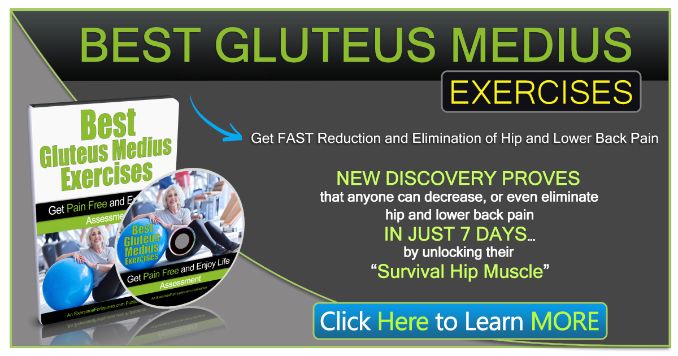If you’ve been experiencing hip pain [1] or simply want to improve your mobility, stability, and performance, learning how to strengthen your hips is the game-changer you need.
Whether you’re recovering from injury, looking to prevent discomfort, or just want stronger hips for climbing stairs or lifting weights, this guide is for you. The hips play a major role in everything from balance and posture to walking and athletic performance.
Below are 9 of the best exercises to strengthen your hips, pulled together from proven programs. Let’s dive in!
1. Supine Knee Drive With Resistance Band
- Targets: hip flexors, hip joint, thigh muscles, glutes, and hamstrings
- Benefits: Strengthens hip flexion, helps improve hip mobility, and boosts blood circulation in the hips and legs.
- Lie on your back on the floor.
- Loop a resistance band around the arch of your foot, then lift your leg and bend your knee.
- Straighten out or slightly bend your other leg.
- Hold the handle of the tubing, and then press the foot against the band and return it to the starting position.
- Repeat the movement.
- Start with one set of 5 reps.
Perform this exercise in a smooth, controlled movement with a quick stop at the end position. The intensity can be light to moderate.
2. Goblet Squat
- Targets: hip muscles, knees, core, and glutes
- Benefits: Builds strength in hip extensors, enhances range of motion, and supports hip flexibility.
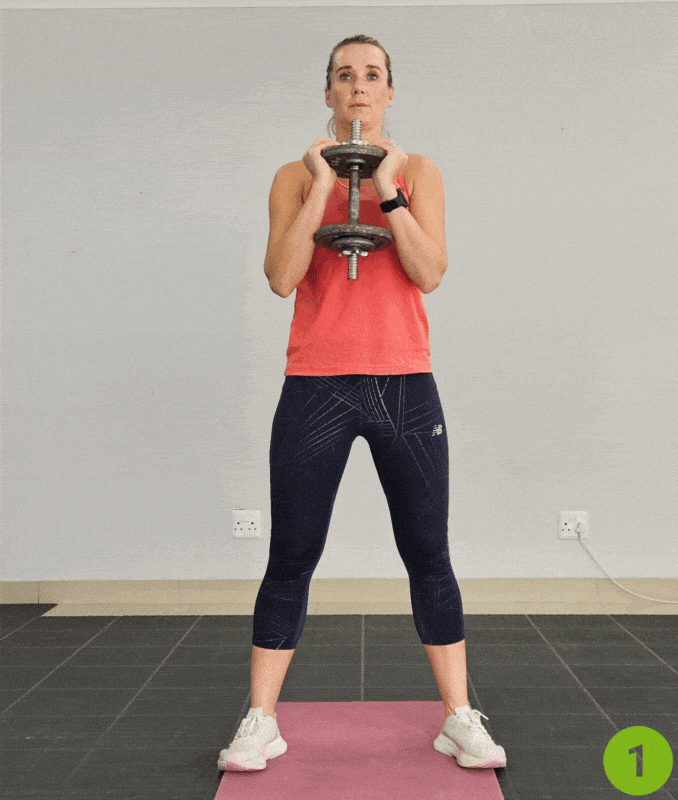
- For this exercise to strengthen hips, stand with your feet wider than shoulder-width apart.
- Grab the dumbbell and bring it close to your chest.
- Lower your hips toward the ground, keeping your back straight.
- Bend the knee forward slightly, bring your hips back, and move the hips down to the floor as far as you can.
- Keep your weight over the middle of your feet or heels.
Perform one set of 5 reps in a smooth, controlled movement with a quick stop at the end position. The intensity can be light to moderate, depending on the weight of the kettlebell you used and on how strong you are in your hips.
3. Side Lunge
- Targets: inner/outer thighs, hip abductors, and tight muscles
- Benefits: Challenges hip mobility and strengthens lateral motion — key for addressing hip problems.
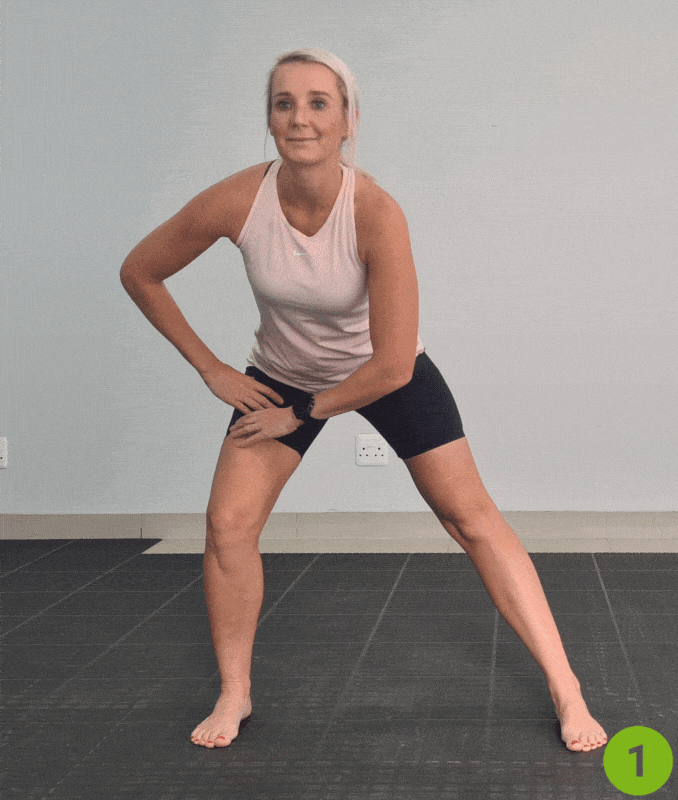
- Stand in a nice, upright position.
- Take a big step sideways.
- Ensure your foot, knee, and hip are aligned, and put your hands on your thigh to help balance yourself out and help you get out of that bottom position.
- Return to the starting position by pushing off with your lead foot and repeat the movement with the opposite leg.
Perform one set of 5 reps, alternating back and forth between legs in a smooth, controlled movement with a quick stop at the end position. The intensity can be light to moderate, depending on how strong you are in the knees and hips.
The purpose of this exercise is to strengthen the knees and hips. This also addresses things in different planes of movement. The goblet squat works mainly in the forward and back directions. The side lunge works on side-to-side directions.
4. Front Lunge
- Targets: glutes, hamstrings, hip flexors, and core
- Benefits: Builds hip strength in the forward plane, boosts hip extension, and targets thigh muscles
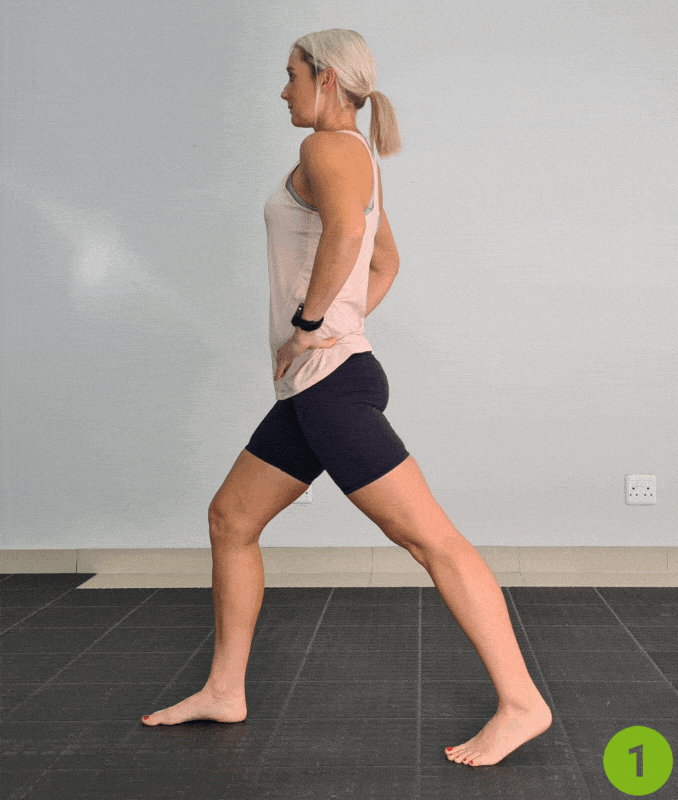
- Stand in a nice, upright position, and place your hands on your hips for balance.
- Take a big step forward and lower your back knee close to the ground without touching it.
- Keep your torso upright and your core engaged.
- Come back up and step forward again with the opposite foot and bring the back knee to the ground.
- Keep the front and back legs at 90 degrees.
Perform one set of 5 reps on each side, alternating back and forth in a smooth, controlled movement with a quick stop at the end position. The intensity can be light to moderate, depending on how strong you are in the knees and hips.
The purpose of this exercise is to strengthen the hips and the knees. We also target things in a different range of motion in the forward and backward directions. With the goblet squat, the movements are smaller. With the side lunge, we take bigger steps that target the glute muscles and hamstrings differently.
5. Squat With Band
- Targets: hip abductors, gluteus medius, and lateral stabilizers
- Benefits: Activates the outer hip muscles and strengthens the twisting motion of the hip joint.
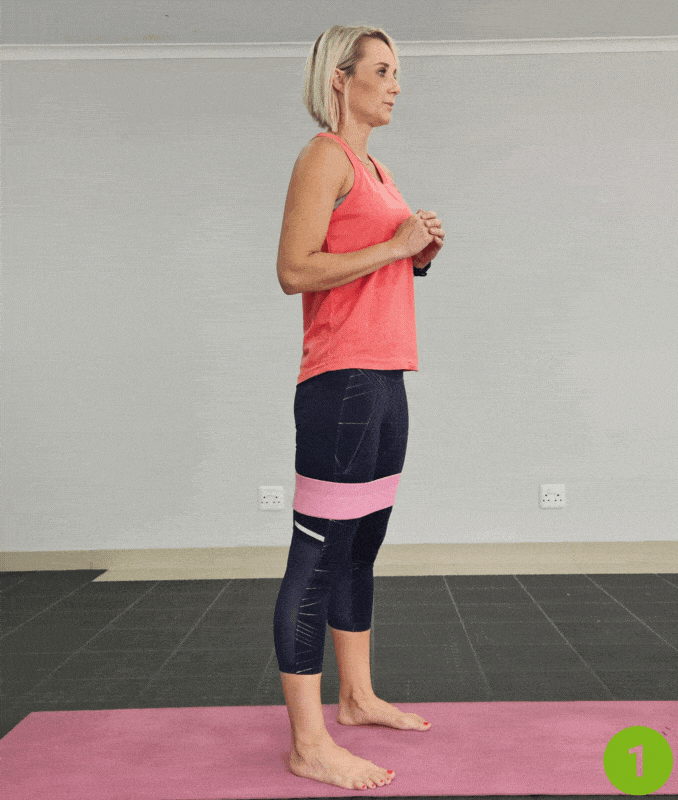
- Position the mini-band just above your knees.
- Position your feet shoulder-width apart, ensuring the band remains taut to increase the resistance in the band.
- Your toes are pointing out, and your feet are more than hip-width apart.
- Lower your hips as you bend your knees, maintaining band resistance, squat down, and return to the starting position.
Start with one set of 5 reps. Perform this exercise in a smooth, controlled movement with a quick stop at the end. The intensity can be light to moderate.
This exercise strengthens the outer part of the hips and the transverse or twisting plane of the hips. We’re targeting the back part and outer part of the hips as well as the twisting movement in the hips.
6. Monster Band Shuffle
- Targets: hip abductors, legs, glutes
- Benefits: Great for hip strengthening and balance training — mimics movements like climbing stairs.
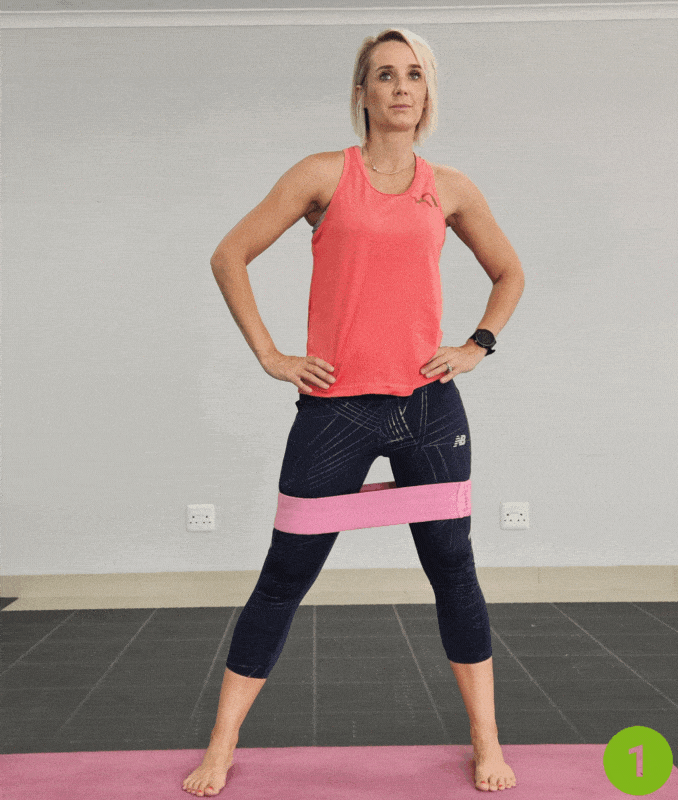
- For this exercise to strengthen hips, position the mini-band just above your knees.
- Take small lateral steps to one side while maintaining tension in the band, and then shuffle in the other direction.
- Move one leg, then follow with the other leg as you keep the tension in the band.
Start with one set of 5-10 reps each way. Perform this exercise in a smooth, controlled movement with a quick stop at the end. The intensity can be light to moderate.
7. Single-Leg Glute Bridge
- Targets: butt muscles, hamstrings, and core
- Benefits: Improves hip strength, challenges core stability, and activates the posterior chain.
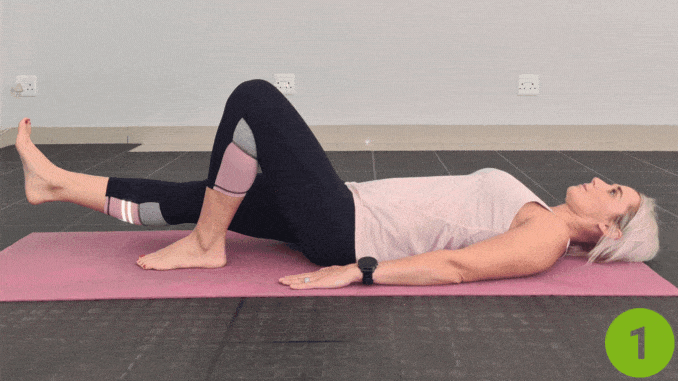
- Lie on your back with your arms at your side.
- Relax your upper body and tighten your abdominal area.
- Press through the heel of the supporting foot.
- Lift your hips until your body forms a straight line from shoulders to knees and straighten one leg out and hold that top position for a couple of seconds, then bring the foot back down and then the hips back down.
- Relax and repeat the movements on the other side.
Perform one set of 5 reps on each side in a smooth, controlled movement, alternating back and forth between legs with a good stop of 1 to 2 seconds at the end position. The intensity can be light to moderate, depending on how strong you are in the hips.
The purpose of this exercise is to strengthen the hips, targeting the glutes and hamstrings differently. We are also working on strengthening the core or abdominal area. A strong core will help when it comes to strengthening the hips.
8. Single-Leg Hip Hinges
- Targets: posterior hip muscles, glutes, and balance
- Pro Tip: Hold the wall with one hand if needed. Focus on contracting the hamstrings and glutes.
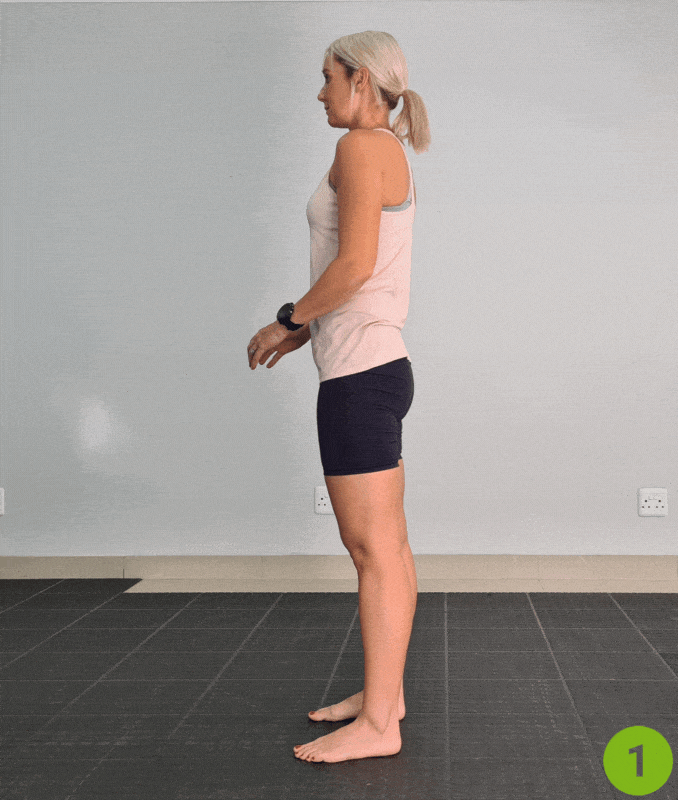
- Stand tall with your feet together, engaging your core.
- Put one hand to the wall for balance.
- Stand on one leg, then hinge forward at the hips and extend your free leg backward.
- Maintain proper alignment with the hips, shoulders, and head.
- Repeat the movement to the other side.
You are bending through contracting the glutes and hamstrings to bring you back to the upright position. You can progress by taking your hand away from the wall. Placing the hand on the wall eliminates balance so that you can focus on contracting the glutes and hamstrings.
Start with one set of 5 reps. Perform this exercise in a smooth, controlled movement with a good contraction at the top position. The intensity can be light to moderate.
9. Single-Leg Burpees
- Targets: total hip mobility, glutes, quads, hamstrings, and calves
- Benefits: Works the hips in all planes of motion, great for athletic performance and functional strength.
- Begin in an upright standing position.
- Place all of your weight or balance on one leg, then go down into a four-point position.
- Extend the leg back into a plank position and pop the leg back up, then return to the starting position and hop.
Start with one set of 5 reps on each leg. Perform this exercise in a smooth, controlled movement between steps and a quick turnaround at the end position. The intensity is moderate.
This exercise to strengthen hips is probably the most challenging among the five as it targets the hip movement in all directions.
Why Strengthening Your Hips Matters
Your hips are the powerhouse of movement. Weak hips can lead to poor posture, pain in the knees, limited mobility, or even injuries in your lower back and other leg.
By incorporating these hip exercises into your exercise routine, you’re not just building muscle — you’re boosting longevity, flexibility, and total body wellness.
If you’re dealing with experiencing hip pain [2], tightness, or reduced range of motion, these movements are an excellent alternative to invasive options like injections or surgery. They’re also often prescribed in physical therapy for hip injuries or hip problems.
Bonus Stretch: Butterfly Pose for a Gentle Stretch
Want to improve hip flexibility? [3]
- Sit on the floor, bring one foot to meet the other foot in front of you.
- Let your knees fall to the side.
- Gently pull your feet in for a deeper stretch.
- Hold for 20–30 seconds.
This promotes blood circulation, improves hip mobility, and gives a gentle stretch to tight hip muscles.
Dr. Christopher Boone, a fellowship-trained orthopedic surgeon specializing in hip and pelvic disorders, emphasizes the importance of targeted exercises.
He recommends incorporating movements such as knee lifts, leg raises, and the butterfly pose into your routine. These exercises are designed to stretch the hip flexors, engage the thigh muscles, and activate the gluteal muscles, thereby enhancing hip strength and mobility.
Dr. Boone notes that strengthening the muscles surrounding the hip joint reduces strain on the bones, leading to improved mobility and decreased pain.
Additionally, strong hips contribute to better knee alignment and can alleviate leg pain. For individuals experiencing hip pain or aiming to preserve mobility, Dr. Boone advises consulting with a healthcare professional to develop a customized exercise routine tailored to individual needs.
Final Tips from a Physical Therapist’s Playbook
- Always warm up before doing strengthening exercises.
- If you’re new, start without weights and progress gradually.
- Consult a healthcare professional if you’re recovering from surgery or an injury.
- Focus on proper form—starting position matters more than speed.
- Keep your feet hip-width apart unless stated otherwise.
If you are suffering from any sort of hip discomfort and want to get rid of the soreness once and for all, then check out the Gluteus Medius Exercises program now!
Frequently Asked Questions
Why is hip strength so important?
Hip strength plays a vital role in maintaining joint stability, improving range of motion, and reducing the risk of injuries to your knees, lower back, and other leg. Strong hips also support everyday movements like walking, standing, lifting weights, and climbing stairs.
How often should I do hip strengthening exercises?
It depends on your goals. For general maintenance or mild hip pain, 2–3 sessions per week are usually enough. If you’re recovering from injury or in physical therapy, your healthcare professional might recommend daily sessions. Always follow a personalized exercise program for the best results.
Can these exercises help with hip flexibility, too?
Yes! Many of these hip exercises—like butterfly pose, side lunges, and hip circles—improve both strength and hip flexibility. They promote blood circulation, loosen tight muscles, and support better posture.
Are resistance bands necessary for these workouts?
While not required, using a resistance band can significantly increase the effectiveness of your workouts by adding external resistance to your hip strengthening exercises, especially for moves like the monster band shuffle and squat with band.


